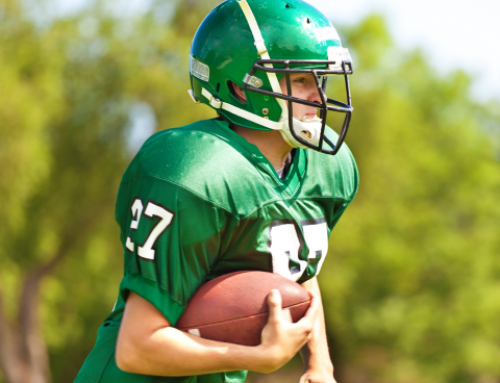What’s the Difference Between Dry Needling and Acupuncture?
![]()
You’ve probably learned about or seen dry needling recently. A growing number of athletes, from NFL players to baseball players to NBA stars have put the method in the news. Some have used it to help recover from an injury, others swear by it as an ongoing form of self-care and maintenance. What is dry needling and why is it becoming so popular?
Dry needling helps alleviate pain, improve mobility and enhance range of motion. A number of physical therapists and other rehabilitation professionals say it’s one of the most effective treatment strategies they have.
What Exactly Does Dry Needling Do?

The primary goals of dry needling are to desensitize nerves, restore motion and function, and induce a healing response in tissue. A super-thin needle is inserted into the skin and manipulated to cause a small muscle spasm, which subsequently releases tension within the muscle.
For seasoned practitioners, dry needling is extremely beneficial, producing quick and tangible results on top of other movement remediation. When practiced as a standalone passive treatment, the results derived from dry needling are random at best.
How Does Dry Needling Differ From Acupuncture?
Dry needling is a technique that treats neuromusculoskeletal systems based on pain patterns, muscular dysfunction and other orthopedic signs and symptoms. It proceeds from a physical examination and assessment that guides the treatment. Acupuncture is a technique for balancing the Flow of Energy or Life Force, known as Qi or Chi, believed to flow through meridians, pathways in the body.
The differences between dry needling and acupuncture are highly debated in the world of rehabilitation. Acupuncturists stake a claim on the use of needles, but physical therapy legislation across North America has also opened up the use of dry needling.
The Future of Rehabilitation and Therapy?
There’s a reason why world-class athletes are being treated for pain and dysfunction with dry needling. You’d be hard pressed to find a professional sport team training room without a practitioner on staff who can deliver the many benefits of dry needling as part of a holistic approach to rehabilitation. Since the best athletes in the world are starting to gravitate towards this treatment modality, it’s time to pay attention to this novel physical therapy technique.
[cf]skyword_tracking_tag[/cf]
RECOMMENDED FOR YOU
MOST POPULAR
What’s the Difference Between Dry Needling and Acupuncture?
![]()
You’ve probably learned about or seen dry needling recently. A growing number of athletes, from NFL players to baseball players to NBA stars have put the method in the news. Some have used it to help recover from an injury, others swear by it as an ongoing form of self-care and maintenance. What is dry needling and why is it becoming so popular?
Dry needling helps alleviate pain, improve mobility and enhance range of motion. A number of physical therapists and other rehabilitation professionals say it’s one of the most effective treatment strategies they have.
What Exactly Does Dry Needling Do?

The primary goals of dry needling are to desensitize nerves, restore motion and function, and induce a healing response in tissue. A super-thin needle is inserted into the skin and manipulated to cause a small muscle spasm, which subsequently releases tension within the muscle.
For seasoned practitioners, dry needling is extremely beneficial, producing quick and tangible results on top of other movement remediation. When practiced as a standalone passive treatment, the results derived from dry needling are random at best.
How Does Dry Needling Differ From Acupuncture?
Dry needling is a technique that treats neuromusculoskeletal systems based on pain patterns, muscular dysfunction and other orthopedic signs and symptoms. It proceeds from a physical examination and assessment that guides the treatment. Acupuncture is a technique for balancing the Flow of Energy or Life Force, known as Qi or Chi, believed to flow through meridians, pathways in the body.
The differences between dry needling and acupuncture are highly debated in the world of rehabilitation. Acupuncturists stake a claim on the use of needles, but physical therapy legislation across North America has also opened up the use of dry needling.
The Future of Rehabilitation and Therapy?
There’s a reason why world-class athletes are being treated for pain and dysfunction with dry needling. You’d be hard pressed to find a professional sport team training room without a practitioner on staff who can deliver the many benefits of dry needling as part of a holistic approach to rehabilitation. Since the best athletes in the world are starting to gravitate towards this treatment modality, it’s time to pay attention to this novel physical therapy technique.
[cf]skyword_tracking_tag[/cf]













